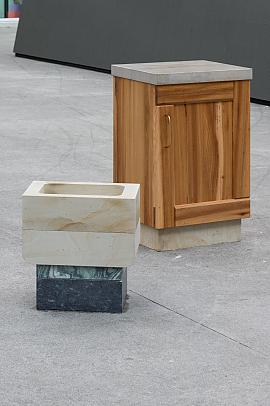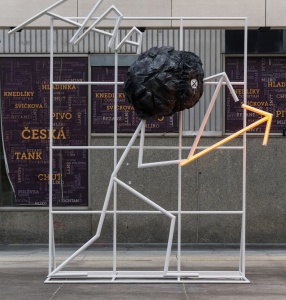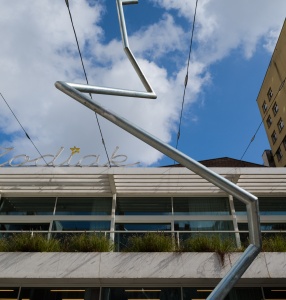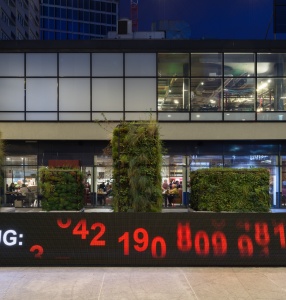Olga Micińska
"Whetstones (pedestals)"
A pedestal is built upon contradictions. In its function as the base of a monument, the pedestal ought to disappear, allowing the monument to stand tall. As an object of distancing the monument from the floor, its status remains marginal. In its role of framing the monument so that it stands out from the back- ground, it simultaneously fades into it.
It evokes the monuments’ superior status and untouchable nature, yet it doesn’t have any character of its own (Stanisław Jerzy Lec once said, ‘When smashing monuments, save the plinths. They’ll always come in handy).’ The pedestal attests to a sense of permanence, however it also demasks the tone of classic monuments, historically contemptuous of defiance. In order to hold up something of incredible weight, it must also be quite weighty itself, revealing not so much the ‘weight of history’ as much as the ‘broad strokes’ and pressure imposed by the bronzed images of the past.
Micińska takes the pedestal to task – both physically and metaphorically – to examine qualities that have been overlooked. The plinth, unleashed from its monument, is the subject of scrupulous analysis as a medium in its own right.The objects scattered around the square serve to accustom us with the monumental element, which is usually used to create distance, but above all it follows a speculative pursuit of the pedestal and a ‘support structure’. This speculative pursuit goes beyond, nonetheless, the mere physical quality of the stone as the stuff of monuments.
Various objects are transformed into pedestals, starting from household and industrial items made out of sheet metal, cabinets or whetstones for sharpening knives. This isn’t just about memorialising the invisible actions of everyday life or making the pedestal more accessible by endowing it with the symbolism of functionality. Among the pedestals, we find various sorts of euro-palettes: overlooked objects from the Western military-industrial complex, examples of the ‘containerization’ of the new global standard (which uses up over 1/3 of the lumber produced in the U.S.).
The role of the pedestal is thus shaken, but not toppled. The basis for this gesture is the texture of the stone, which reveals traces of the process. These new pedestals trick the eye in their imitation of wood, steel or plastic. They turn out to be change- lings, works-in-progress, metaphors, unfinished, as tools or elements that are undergoing a process of change. The process in this context is often carried out using stones as well – a nod to the whetstones of the title.This process of taming and destabilizing of the pedestal can be considered a form of profanating the monuments themselves. And yet, in spite of the multitude of meanings, these new pedestals are an attempt to turn the pedestal into a monument in its own right. It raises the question about historical circumstance, which can be answered by the abstract notions of support, rather than the actual figure that such monuments meant to represent. It’s not a concrete proposal for what a monument should be, but rather it shows a way to take the pressure off the pedestal and remodel it in a way that endows it with the potential to carry new meanings.









